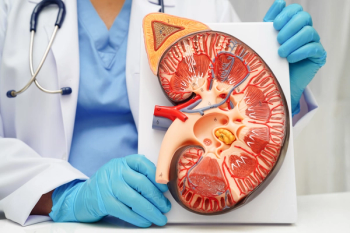
Antivirals May Reduce the Need for Recurrent Liver Transplants
Effective therapies in liver transplant patients reduces HCV recurrence.
Effective therapies in liver transplant patients reduces HCV recurrence.
Hepatitis C virus infection (HCVI) creates a need for more liver transplants in Westernized countries than any other disease.
Reinfection of a transplanted liver with HCV may result in a second, third, or even fourth transplant as the virus destroys each new transplanted organ. More than one-fourth (27%) and up to 42% of all repeat liver transplants performed in the United States are a result of HCVI-related graft damage.
After a transplant, the course of liver damage is much more aggressive due to use of immunosuppressive therapy. Within 5 years of the initial transplant, approximately 80% to 95% of patients develop chronic hepatitis, and 10% to 28% of patients develop cirrhosis.
Nearly half (42%) of patients with cirrhosis will develop decompensated liver disease within 1 year. Liver supplies are limited, and often a second transplant is unavailable. An estimated 15,000 patients die of HCV-related complications in the United States each year.
With effective treatments for HCVI, the need for repeat liver transplants is expected to shrink in coming years.
A reduced need for liver transplant may help shrink the lifetime cost of HCV. Current estimates place the lifetime costs at $65,000 to $270,000 per patient.
In patients who have had a liver transplant for an initial case of HCV, traditional peginterferon-based therapy results in sustained viral response (SVR), or functional cure, in 10% to 25% of patients. These results are improving with the availability of direct-acting antivirals (DAAs).
In a 103-patient trial, the combination of sofosbuvir and ribavirin led to more than half (59%) of all patients experiencing SVR. A much higher cure rate occurred in a subgroup of patients with early HCV recurrence—nearly three-fourths (73%) of these patients achieved SVR.
Subsequently, a 40-patient open-label trial of sofosbuvir and ribavirin in patients with early HCV recurrence after a transplant showed similar results, with SVR occurring in 70% of treated patients.
Similarly, a study of Viekira Pak (ombitasvir, paritaprevir, dasabuvir, and ritonavir) in a 34-patient subgroup of the CORAL-1 trial revealed a 97% rate of SVR in patients who had previously received a liver transplant and had a mild recurrence of HCVI.
A growing body of evidence supports use of DAA therapy in patients who have undergone a liver transplant to eradicate any remaining HCV to reduce the need for further transplants.
Both sofosbuvir-based regimens and Viekira Pak appear to have important applications in the conservation of limited liver supplies through HCV eradication after an initial liver transplant.
Reference
Mitchell O, Gurakar A. Management of Hepatitis C Post-liver Transplantation: a Comprehensive Review. J Clin Transl Hepatol. 2015;3(2):140-148.
Newsletter
Stay informed on drug updates, treatment guidelines, and pharmacy practice trends—subscribe to Pharmacy Times for weekly clinical insights.
















































































































































































































